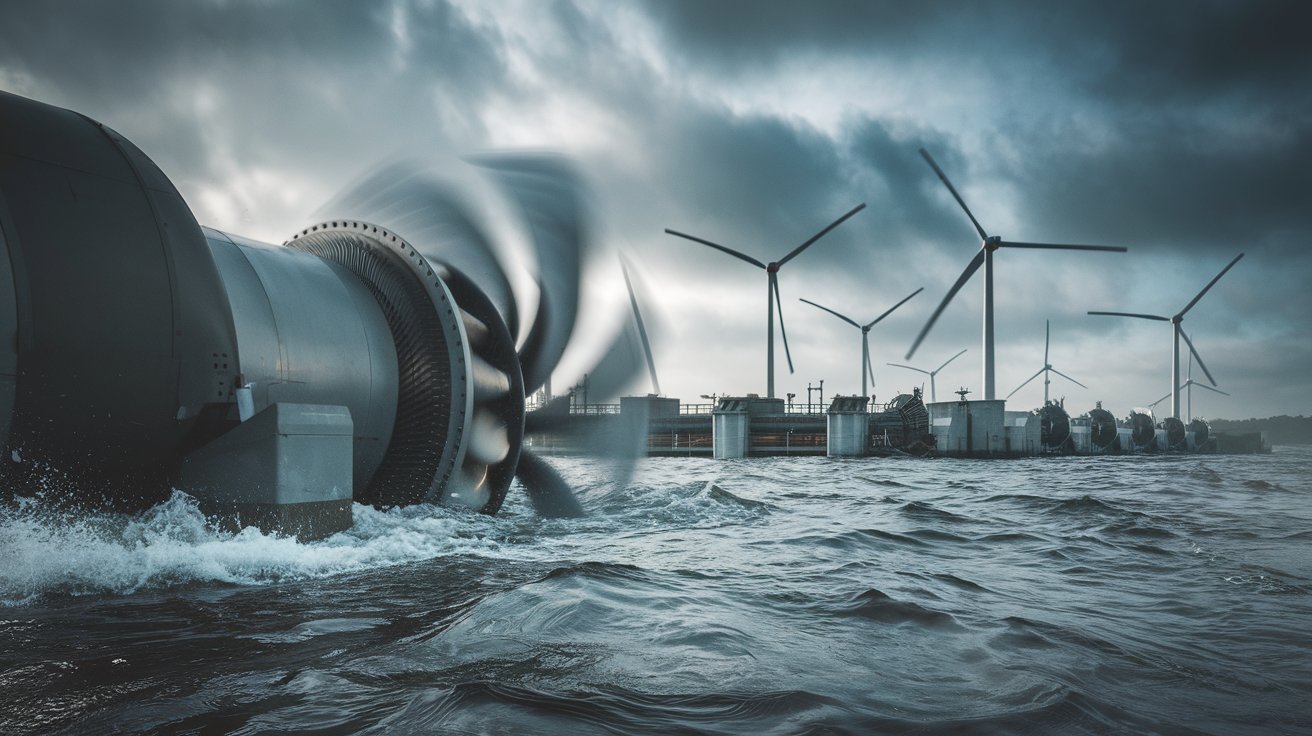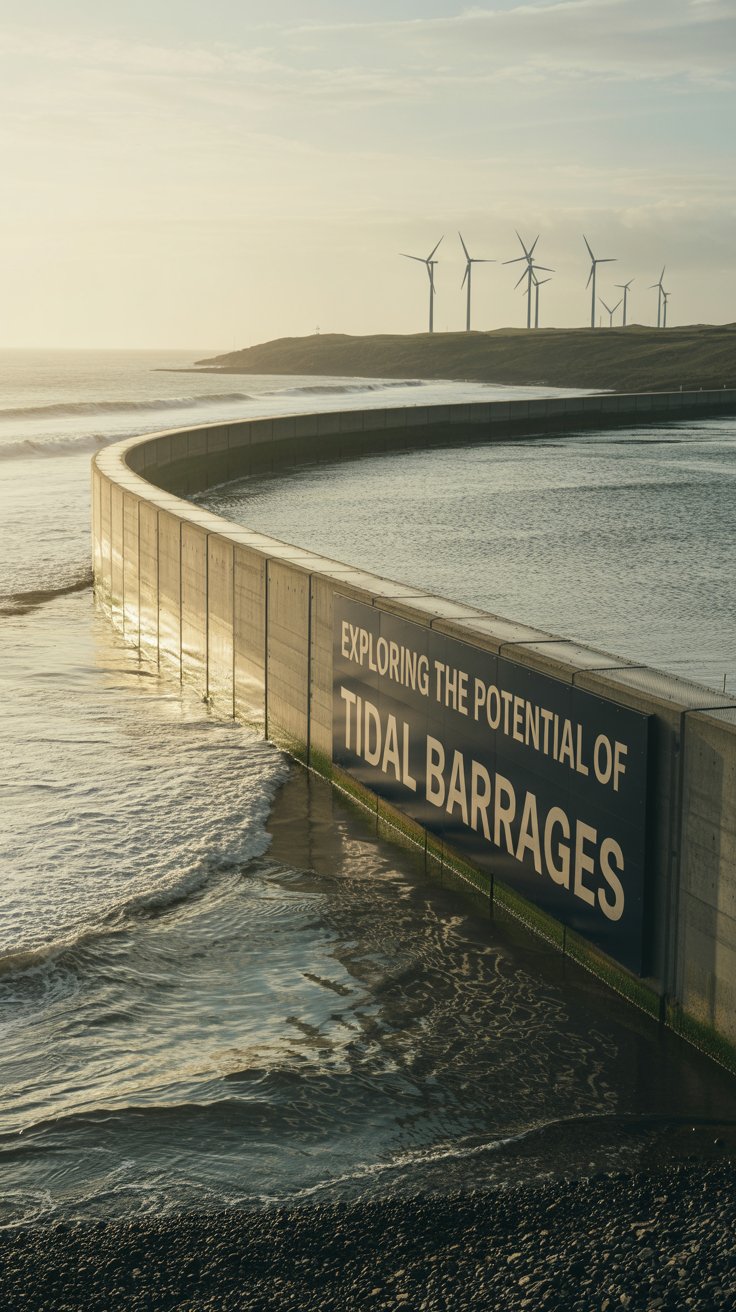Introduction
The potential future of tidal energy expansion is enormous, as countries around the world seek to tap into the power of the oceans for a sustainable future.
Tidal energy is a renewable resource that harnesses the natural rise and fall of tides to generate electricity. Unlike solar and wind energy, tidal power is highly predictable, offering a reliable source of energy.
With advancements in technology and growing environmental awareness, the potential for tidal energy to become a significant contributor to the global energy mix has never been more promising.
In conclusion The potential for tidal energy expansion is immense, and with ongoing advancements in technology, growing environmental awareness, and strong government support, tidal energy could play a crucial role in the future of global energy production.
Although there are challenges to overcome, such as high costs and environmental considerations, the advantages of tidal energy make it a promising solution for a sustainable and reliable energy future.
What is tidal energy?
Tidal energy is a form of hydropower that utilizes the movement of water caused by tidal forces to generate electricity. The two primary methods of capturing tidal energy are through tidal stream generators and tidal barrages.
Tidal stream generators use underwater turbines to capture the kinetic energy from the flow of water, while tidal barrages use the difference in water levels between high and low tides to produce power.
One of the most significant advantages of tidal energy is its predictability. Unlike solar or wind power, which depends on weather conditions, tidal movements are consistent and can be forecasted with great accuracy. This makes tidal energy an ideal solution for providing reliable and sustainable power for the future.
Why is tidal energy important?
The need for renewable energy sources has never been more urgent, as the world grapples with the effects of climate change and the depletion of fossil fuel resources. Tidal energy presents a viable alternative to traditional energy sources by offering a low-carbon, sustainable, and reliable power source.
Additionally, tidal energy can help to diversify a country’s energy portfolio, reducing dependence on fossil fuels and enhancing energy security.
As the demand for clean energy rises, tapping into the potential of tidal energy will become increasingly important to meet the global energy needs without harming the environment.
The Potential Future of Tidal Energy Expansion
1. Abundant and Predictable Resource
The potential for tidal energy expansion is vast due to the sheer availability of tidal energy resources. The world’s oceans are vast, covering around 71% of the Earth’s surface, and many regions experience significant tidal ranges that can be harnessed for energy.
Areas such as the Bay of Fundy in Canada, the United Kingdom’s coasts, and South Korea’s waters have some of the highest tidal movements in the world, making them ideal locations for tidal energy projects.
Moreover, the predictability of tides offers a distinct advantage. Since tides follow regular cycles, tidal energy can provide a reliable and stable energy source that can be forecasted accurately.
This reliability makes tidal energy an attractive option for both utility-scale power plants and smaller, local energy solutions.
2. Technological Advancements
The continued advancement of tidal energy technology is a key driver of its expansion potential. In the past decade, tidal stream turbines have seen significant improvements in efficiency, durability, and cost-effectiveness.
Companies are developing innovative turbine designs that can operate in deeper and more challenging environments, making it possible to harness tidal energy in previously unexploited areas.
Additionally, improvements in tidal barrage construction and maintenance techniques are helping to reduce the costs associated with tidal energy projects.
As technology continues to advance, the potential for tidal energy to compete with other forms of renewable energy will increase, making it a more attractive option for large-scale power generation.
3. Environmental and Economic Benefits
Tidal energy has significant environmental and economic advantages. Unlike fossil fuel-based power generation, tidal energy produces no greenhouse gas emissions, making it an environmentally friendly energy source.
Additionally, tidal energy projects can create jobs, stimulate local economies, and contribute to energy independence.
While there are concerns regarding the environmental impact of tidal energy infrastructure on marine ecosystems, ongoing research and development are focused on minimizing these impacts.
By designing turbines and barrages that are sensitive to local wildlife and ecosystems, the negative effects can be mitigated, ensuring that tidal energy remains a sustainable and environmentally responsible energy solution.
4. Government Support and Policy Incentives
Government support and policy incentives are critical to unlocking the full potential for tidal energy expansion.
Many countries are offering subsidies, grants, and tax incentives to encourage the development of renewable energy technologies, including tidal power.
As nations work to meet their climate goals and reduce carbon emissions, tidal energy is becoming an increasingly important part of the energy transition.
In addition to financial incentives, governments are also investing in research and development to advance tidal energy technology and reduce the costs associated with deployment.
Collaborative efforts between governments, research institutions, and private companies are helping to accelerate the growth of tidal energy projects worldwide.
Challenges to Tidal Energy Expansion
While the potential for tidal energy expansion is significant, there are several challenges that need to be addressed.
One of the main obstacles is the high upfront capital costs associated with constructing tidal energy infrastructure. Building tidal stream turbines and tidal barrages requires significant investment, which can deter some investors and developers.
Another challenge is the environmental impact that large-scale tidal energy projects may have on marine ecosystems. While tidal energy is much cleaner than fossil fuels, the construction of turbines and barrages can disrupt local wildlife, such as fish migration patterns.
Careful planning and environmental assessments are needed to minimize these impacts.
Finally, the development of tidal energy infrastructure requires access to suitable sites, which are often located in remote or challenging locations. This can present logistical and operational challenges, particularly when it comes to maintenance and repair of underwater turbines.
FAQ
What is tidal energy?
Tidal energy is the power generated from the movement of ocean tides, either through tidal stream generators or tidal barrages.
What are the advantages of tidal energy?
Tidal energy is renewable, reliable, and environmentally friendly. It produces no greenhouse gas emissions and can provide stable power generation.
Which countries are best suited for tidal energy?
Countries with strong tidal currents, such as the United Kingdom, Canada, South Korea, and France, are well-suited for tidal energy development.
What challenges does tidal energy face?
Challenges include high upfront costs, potential environmental impacts, and the need for suitable locations for energy generation infrastructure.
Can tidal energy compete with other renewable sources?
As technology advances and costs decrease, tidal energy is becoming a more competitive option in the renewable energy market.





Leave a Reply